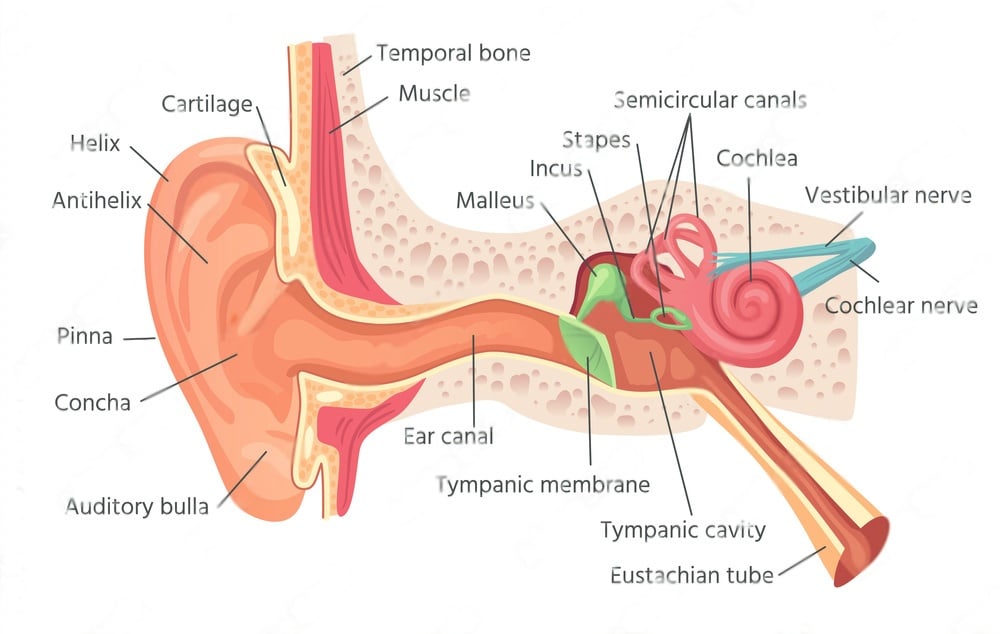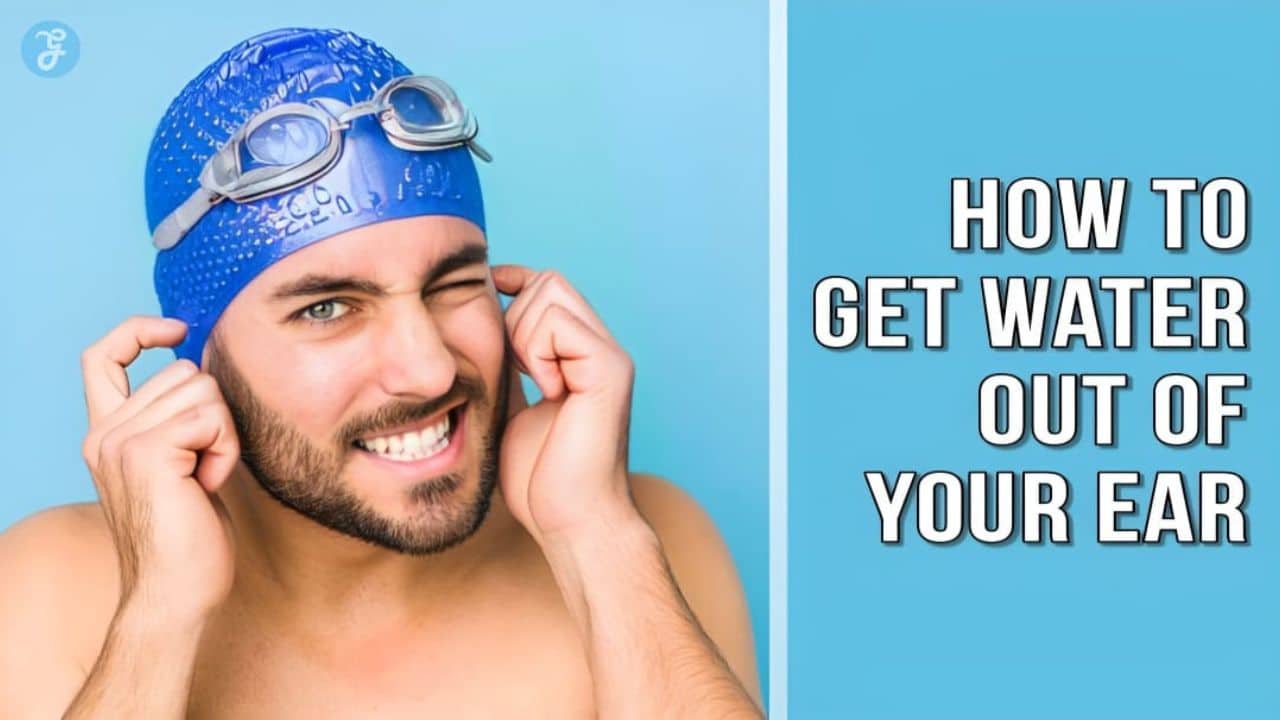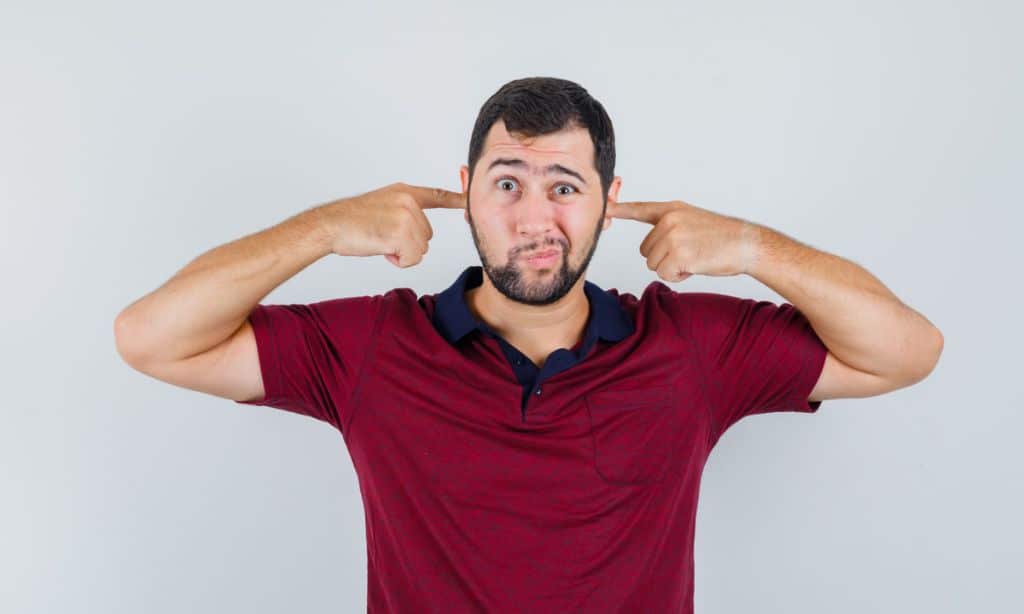When water gets into the ear, people first want to know how to get water out of your Ear. Even if you aren’t swimming, you can still get water in your ear canal if you are near water. If this happens, you might feel like your ear is tickling. This feeling might go all the way up to your jawbone or throat. You might also not hear as well or only hear muffled sounds.
People of all ages can have fun when they play in the water. Summer is a great time to swim to your heart’s content, but all the splashing can sometimes cause water to get stuck in your ears. Some signs are a full feeling in the ear canal and the feeling of water moving around in your ear. It can happen in either one ear or both. So let’s get rid of how to get water out of your ear.
What If the Water Doesn’t Drain?
If you’ve been in the water for a while and you still feel like your ears are clogged, water may be stuck in the outer ear. This part of the ear can be wet quickly without getting hurt. But if the water stays in there, it can cause an infection.
When there is a lot of moisture in the outer ear canal, it makes an excellent place for bacteria to grow, which can cause an ear infection. This kind of ear infection happens in the external auditory canal. It is often called “swimmer’s ear” because it is common after swimming.
Dos for Getting How to Get Water out of Your Ear
Here are some ways how to get water out of your ear. Follow these steps to get water out of your ears safely.
- Use a soft towel or cloth to dry the outside of your ear. Don’t put the cloth down the drain.
- Turn your head to the side to help the water drain. Gently pull your earlobe. This will make your ear canal straight and help water flow.
- Set your blow dryer to its lowest and direct the airflow toward your ear. Hold it back at least one foot.
- Try drying drops that you can buy in a store.
- Mix 1 part white vinegar with 1 part rubbing alcohol to make drying drops at home. Pour 1 teaspoon of the solution into each ear, tilt your head, and let the liquid drain out.
Don’ts for Getting Water Out of Your Ears
Getting water out of your ears the wrong way can scratch your ear canal or move earwax in the canal. If you use these ways to dry out your ears, you will be more likely to get an infection, not less. So this is very important to know how to get water out of your ear correctly.
- Don’t use cotton balls. They can pack earwax and dirt down in your ear canal, remove the wax that protects your ear, upset the natural bacteria in your ear canal, or irritate the thin skin of your ear canal.
- Don’t put your fingers or fingernails in your ears. The thin skin of the ear canal can be scratched.
- If you or your child has ear tubes or a torn eardrum, don’t use hydrogen peroxide or drops that dry out the ear.
How to Spot an Infection by Getting Water in the Ear?
Drying ears is another path how to get water out of your ear. If the tips for drying your ears didn’t help, look out for these signs of a swimmer’s ear:
- Your ear canal is itchy
- The inside of your ear is red
- When you pull on your outer ear or push on the little bump in front of your ear, you feel pain or discomfort that worsens.
- The fluid drains from your ear canal and is clear and odorless.
If you have these signs, your doctor may give you drops to put in your ears. The drops will kill the bacteria or fungus causing the infection and reduce your pain, swelling, and inflammation.
How to Keep Water Out from the Ear?
Sometimes the best way to attack is to defend well. Try these tips to keep your ears from getting wet in the first place.
- If you are sweaty, take out your earbuds.
- Put petroleum jelly on a cotton ball in your outer ears while you bathe.
- When you use hair spray or hair dye, plug your ears with cotton balls.
- When you go into the water, wear earplugs and a swim cap.
- If you have a problem with too much wax in your ears, you should have your doctor clean them out. Yes, it protects your ears, but too much of it can cause water to get stuck in the ear canal. Check with your doctor at all times. Don’t try to do it yourself.
- If your doctor says it’s okay, you can use hydrogen peroxide. If you have too much wax in your ears, they may tell you to clean them with a 3 percent hydrogen peroxide solution. But you can’t do this if you have tubes in your ears. Put about half of what can fit in an ear dropper into your ear. Let it get to a boil. Then turn your head to the side, pull gently on the top of your ear, and let it drain.
Read More: How to Pop Your Ears in 5 Easy Methods
How to Get Water out of Your Ear Canal?

If water gets stuck in your ear, there are a few things you can do at home to help:
1. Moving Earlobe
When water enters their ears, many people move or pull on their earlobes. If you lie on your side and stay still for a few minutes, the liquid may drain or trickle out of your ear.
Turn the head so that the ear that hurts is facing down. Hold the earlobe behind the ear with your thumb and gently pull and move the ear in all directions. This may help shake the inside of the ear and make a path for any water to flow out.
This process may also help move the ear’s deeper parts. Try yawning, wiggling the jaw, or making big chewing movements with the mouth to move water toward the outer canal. Then, pull on the earlobe to finish the process.
If a person feels pain when they pull on their earlobe, it means they have an infection and should see a doctor. If an infection causes the problem, they may give you medicine to clear it up.
Some doctors in the United States may use aural toilets instead of eardrops. To do this, a thin tool with a small hoop is put into the ear to clean it.
2. Make Gravity Do the Work
Let gravity and time do the work. Lay on your side where the water is stuck, and put a towel under your head to soak up the water. The water should move down and out of your ear slowly but surely.
3. Create a Vacuum
It might be possible to use the palms to create a vacuum in the ear and pull the water out.
Turn the affected ear down by tilting the head to the side. Cup the hand around the ear so that the palm covers most of the ear and ear canal.
Push the palm with the cupped fingers toward the ear, gently pressing the ear into the head, and then pull away. As the palm presses into the ear, it should flatten; pulling away, it should cup back up. During this, the person’s ear should feel like it’s being pulled in and then let out.
After you’ve done this a few times, turn the heat down to let the liquid drain outștiinștii.știi.știi. It might help to move the earlobe again. And it would be another way to get water out of your ear.
4. Use a Blow Dryer
- The heat from a hairdryer can help dry out your ear canal and remove the water in it.
- Set your hairdryer to its lowest setting and turn it on.
- Move the hairdryer back and forth while holding it about a foot from your ear.
- Let the warm air blow into your ear while you pull down on your earlobe.
5. Try Alcohol and Vinegar Eardrops
The water in your ear can drain out faster if you drink alcohol. It also stops bacteria from growing, which can help keep you from getting sick. If the water is stuck because of a buildup of earwax, vinegar may help eliminate it.
- To make eardrops, mix equal parts of alcohol and vinegar.
- Put three or four drops of this mixture into your ear with a sterile dropper.
- Rub the outside of your ear with your finger.
- Wait 30 seconds, then tilt your head to the side to let the solution drain out.
Don’t use this method if you have any of these conditions:
- a middle ear infection
- a perforated eardrum
- tympanostomy tubes (eardrum tubes)
6. Use Hydrogen Peroxide Eardrops
You can also try hydrogen peroxide or rubbing alcohol. This can help the ear canal dry out. Be careful, though. If you have a hole in your eardrum, don’t use alcohol drops because it will hurt a lot, and high doses could harm your ear. Read “How to Use Ear Drops Right” for helpful suggestions and tips.
7. Try Olive Oil
Olive oil can also help keep your ears from getting infected and keep water out.
- In a small bowl, heat some olive oil. Put a few drops on the inside of your wrist to find out how hot it is.
- Put a few drops of the oil into the affected ear with a clean dropper.
- Lay on the other side for 10 minutes, then sit and tilt the ear down. The oil and water should flow out.
8. Try More Water
This method may not make sense, but it can help you get water out of your ear.
- Lie on your side and use a clean dropper to put water in the ear that hurts.
- Wait 5 seconds, then flip over so that the ear that hurts faces down. The water should all drain away.
9. Take Over-the-counter Medication
There are also eardrops that you can buy at the store. Most of them are made with alcohol and can help dry out your outer ear canal, kill bacteria, or eliminate earwax and dirt.
10. Applying a Warm Compress
- Soak a towel or washcloth in warm water and wring out the extra water. Make sure the towel isn’t too hot, or it could burn or irritate your ear.
- A warm compress might help loosen up congestion in the ear and relax the tissues there.
- Fold the towel in half, tilt your head back, and put the compress on your ear. Rest there for a few minutes to let the heat relax your ear and help it drain.
- After the ear is warm, it may also help to use other methods, like yawning or pulling on the ear, to help it drain more.
11. Over the Counter Drops
Like the vinegar method above, you can also buy an eardrop product containing a hydrogen peroxide solution at the drugstore. When there is too much ear wax, getting water out of the ears can be challenging. These products can help eliminate earwax and reduce the number of bacteria in the ear.
12. Flush Your Ear Out
Dr Thompson says that if gravity and movement don’t help, you could use a dropper or small syringe to flush your ear with a 50/50 mix of rubbing alcohol and white vinegar. “The rubbing alcohol helps dry out the ear, and the vinegar makes the environment acidic, which bacteria don’t like.”
Put three or four drops of the mixture into your ear, and then gently rub the outside of your ear. After 30 seconds, tilt your head to the side to let the mixture run out. Don’t use this method if you have an outer ear infection, a hole in your eardrum, or tympanostomy tubes (eardrum tubes).
13. Use a Hairdryer
Dr Jethanamest says you could use a hairdryer on a very low or cool setting to help dry your ear. Again, it’s essential to be gentle and keep the hairdryer about a foot away from your ear as you move it back and forth. At the same time, give your earlobe a gentle pull-down.
14. The Pulling Technique
Reach behind your head and gently pull on the outside of your ear with your other hand. This will make the ear canal straight and let the water drain out.
How to Remove Water from Your Middle Ear?
Depending on what’s causing your middle ear congestion, over-the-counter decongestants or antihistamines may help. Just do what it says on the package. Here are some other ways to get water out of your ear and things that might help you.
15. Yawn or Chew
When water gets stuck in your eustachian tubes, moving your mouth can sometimes help open the tubes.
Your eustachian tubes will feel better if you yawn or chew gum.
16. Perform the Valsalva Maneuver
This trick is known to people who go scuba diving and fly. It involves plugging your nose and blowing through it with moderate force. This helps to bring the pressure in your ears back to normal and should let water drain.
This method can also be used to open up eustachian tubes that are blocked. Don’t try to blow too hard. This could hurt the eardrum.
- Take a deep breath. Then close your mouth and use your fingers to squeeze your nose shut gently.
- Blow slowly through your nose. If you hear a popping sound, your Eustachian tubes have opened.
17. Use Steam
Warm steam can help your eustachian tubes drain water from your middle ear. Try taking a hot shower or turning a bowl of hot water into a mini sauna.
- Fill a big bowl with hot water that is steaming.
- Hold your face over the bowl and put a towel over your head to keep the steam in.
- Take deep breaths of the steam for 5 to 10 minutes, and then tilt your head to the side to let the water out of your ear.
18. Homemade Remedies
Alcohol and vinegar may help clear the ear of water and dirt. Alcohol might help water dry up. Both alcohol and vinegar may also kill any bacteria in the ear and break up any earwax or other buildup blocking the ear.
- Mix equal parts of rubbing alcohol and white vinegar to make a solution. Once the mixture is ready, tilt the head so the ear that hurts faces up and put a few drops in the ear.
- Rub the outside of the ear gently to move the liquid around. Leave it in the ear for about 30 seconds, then drain it over a towel or the sink. Wash and dry the outside of the ear.
- People with ear problems, like an ear infection, a torn eardrum, or a cut in the ear, shouldn’t use these remedies.
- Warm olive oil can also help people avoid ear infections and get water out of their ears. Put a few drops of the oil directly into the ear and lie down on one side for a few minutes. Sit straight, tilt your head, and let the liquid run out.
Protect Your Ears from Injury
Because the ears are so sensitive, it’s essential to be careful when using home remedies. Don’t stick your finger, an ear swab, or anything else in your ear canal. Putting things in the ear can make the problem worse in several ways:
- Putting in bacteria that could make ear infections more likely
- Move the water deeper into the ear by pushing it.
- hurt your ear canal
- Stick a hole in the eardrum
- You can do a few things to keep your ears from hurting after swimming. Try wearing a swim cap or earplugs when you are in the water. Also, dry the outside of your ear well after swimming or showering.
Also, remember that if you sweat while wearing earbuds, the sweat can get trapped in your ears and cause moisture problems. Taking out the earbuds is best if you are sweating.
When to See Your Doctor?
Most of the time, trapped water goes away on its own. If it bothers you, you might want to try one of these home remedies to help you feel better. But you should call your doctor if the water is still stuck after 2 to 3 days or if you have signs of an infection.
If your ear gets red and swollen, it may be because of an ear infection. It can worsen if you don’t take care of an ear infection. It could cause hearing loss or other problems, like damage to cartilage and bone.
Your doctor can give you medicine to eliminate an infection and ease your pain.
Risks of Having Water in The Ear
If water stays in the ear too long, it can cause an infection. The infection often happens when the ear or water bacteria find an excellent growing place. This causes the body to react, which causes symptoms. That is why you need to know how to get water out of your ear in a proper way.
People may be more likely to get acute otitis externa (swimmer’s ear) if they swim in water with many bacteria, like a lake. Most swimming pools and spas are safer because they have rules about how often bacteria and pH levels must be checked.
People with a long-term skin condition that affects the ear, like psoriasis or eczema, are also more likely to get a swimmer’s ear.
The ear has a few ways to protect itself from infections, but some things can make an infection more likely, such as:
- too much water in the ear
- cuts or scrapes inside the ear canal
- allergies to jewellery or hair products
Some doctors suggest that people with swimmer’s ears wear earplugs when swimming and dry their ears well with a blow dryer or towel afterwards.
Final Words
After bathing or swimming, a person may have water stuck in their ear.
You can do a few easy things to help get this water out of your ear. Some things, like wearing earplugs made for swimmers, can help keep water from getting stuck in the ear.
Getting water out of the ear may make you less likely to get an infection and let the ear work as it should.
If you can’t get the water out of your ear after a few days, or if you have other signs of an infection along with the water in your ear, you should talk to a doctor or ear specialist.
Frequently Asked Questions (FAQs)
check some commonly asked questions on how to get water out of your ear.
Why does water get stuck in my ears after swimming?
Water can stay in the ear for several reasons, such as a narrow ear canal or something in the ear canal, like too much earwax or a foreign object, that prevents water from leaving.
Does it happen to everyone, or are some people more prone to it?
Kids and adults who spend much time in the water will most likely get water in their ears. However, anyone who goes underwater can get water in their ears. You might get water in your ears when you turn yourself upside down, like when you do a flip or a handstand.
Is it risky when water is stuck in the ears?
Sometimes. Cerumen (earwax) is a waxy substance that keeps water out of your ears. Most of the time, water will slowly trickle out on its own. If it doesn’t, bacteria can grow, leading to a swimmer’s ear.
Bacteria can grow in places that are wet and humid, where there are cuts or scratches in the ear canal or allergic reactions or skin conditions.
How do you prevent it?
If you swim or take a bath and get water in your ears, you can buy earplugs at a store or talk to a hearing care professional about getting a set of earplugs made for use in the water. These plugs may be more expensive than foam plugs you can buy at a drugstore, but they can be molded to fit your ears and can be washed and used more than once.
Will water stuck in your ear go away on its own?
Most of the time, trapped water goes away on its own. If it bothers you, you might want to try one of these home remedies to help you feel better. But you should call your doctor if the water is still stuck after 2 to 3 days or if you have signs of an infection.
What happens if you have water in your ear for too long?
When water stays in the ear and doesn’t drain properly, you could get a swimmer’s ear, a surfer’s ear, or another infection that can make you lose your hearing if it’s not treated.
How do you massage your ears to drain?
A great way to ease the pain of an ear infection is to massage your Eustachian tubes. Press lightly on the area where the back of your ear meets your jawbone. Keep pushing and letting go of this flap of skin several times to open up the Eustachian tubes.
Can I put hydrogen peroxide in my ear to remove water?
Hydrogen peroxide should be used. Use a 3 percent hydrogen peroxide solution to clean your ears once in a while to get rid of earwax that can keep water in your ears. Use about half of what would fit in an ear dropper. Let it bubble and fizz, then turn your head to the side and pull back on the top of your ear to help it drain properly.
How do I unclog the Eustachian tubes in my ears?
Symptoms of a problem with the Eustachian tube usually go away on their own. You can open up the tubes by doing exercises. This includes things like chewing gum, swallowing, and yawning. Taking a deep breath, pinching your nostrils shut, and “blowing” with your mouth closed can help relieve the “full ear” feeling.
Why does it feel like water is in my ear?
Here are a few common ones: Infection in the middle ear: When fluid builds up behind the eardrum, children and adults with middle ear infections may feel like their ears are plugged. Most of the time, this problem goes away on its own, but it can be painful.
What happens if my ears don’t pop?
Ear barotrauma can happen if the eardrum looks like it is being pushed in or out. The doctor can look for fluid buildup or blood behind the eardrum by blowing a small amount of air into the ear. Some people with ear barotrauma don’t have any physical signs of it.
Does warm water melt ear wax?
Since earwax dissolves in water, warm water can help soften it. You can do this with warm water from the shower.
Disclaimer: This content is for informational purposes only and does not replace professional medical advice, diagnosis, or treatment. This information is not comprehensive and should not be used to make health or well-being decisions. Consult a qualified healthcare professional with questions about a medical condition, treatment options, or health regimen. This website or the content should never replace professional medical advice.












































